
We’ve been building retirement villages for over 50 years. At IRT we make it easy for you to live the life you want, in a home you love.
Find out moreIRT has been caring for older Australians for over 50 years. Experience personal and professional care in a community you’ll feel proud to call home.
Find out moreIRT has been helping older Australians live independently at home for over 30 years. Our experienced staff provide home care and assisted living services you can trust.
Find out moreAge Matters – Empowering Older Australians
An initiative of IRT Group, Age Matters empowers older Australians to live free from disadvantage by tackling homelessness, loneliness and joblessness.
Find out moreWe’re a community-owned organisation that’s been improving the lives of older Australians for 50 years.
Find out moreWe’d love to find out more about you to see how we can help. Our Customer Service team operates from 8:30am - 5pm 7 days a week.
Call us nowDon’t have time to call? Submit an online enquiry form and our friendly team will be in touch.
Enquire nowWe’re online everyday and here to help answer your questions and point you in the right direction. Our live chat operates from 8:30am - 5pm 7 days a week.
Launch live chatWe encourage our residents, customers, family members and other stakeholders to provide feedback about the services we provide. Your feedback helps us to continually improve our services.
Find out more
This online module includes information sourced from the Australian Government Department of Health and IRT.
At the end of the module you will be able to:
Symptoms of COVID-19 can vary but the most common symptoms are:
Other symptoms can include:
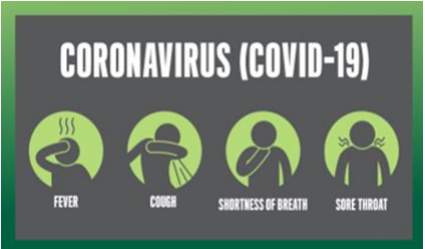
Some people are at a higher risk of developing serious illness from COVID-19 including:
Some groups which experience higher rates of chronic diseases compared to other Australians may also be at higher risk of serious illness.
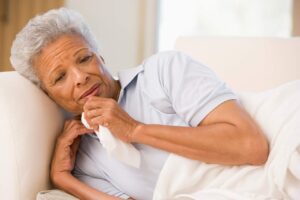
Everyone is at risk of infection.
We all need to be safe.
There are important things that we can do to protect ourselves, our family and those in our care.
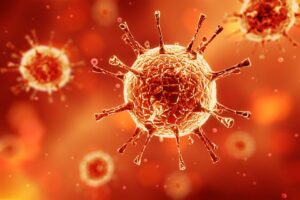
The next section will show you the basic measures you can take to take care of your own health and protect others.
This includes how you can decrease the risk of people in your care becoming infected with COVID-19.
If you have flu like symptoms or feel unwell, or if you have been in contact with anyone who is unwell you should not visit an IRT Aged Care Centre.
You should also follow the government guidelines and get a COVID-19 test.
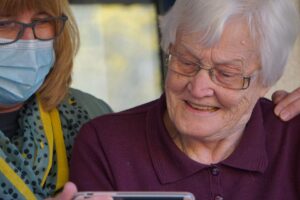
The most important thing you can do to protect yourself is to wash your hands regularly with soap and water.
This is important because washing your hands kills viruses that may be on your hands.
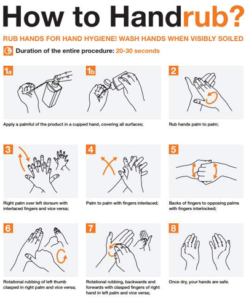
Click on the image for handrub instructions.
Avoid touching your face as much as possible.
This is important because droplets containing the virus may be on your hands and can be transferred to your eyes, mouth or nose where they can infect you.
Most of us touch our face many times per hour without realising.
Try to stop yourself touching your face, and encourage others to do the same.
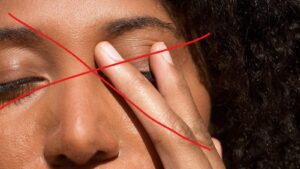
Maintain at least 1.5 metres distance between yourself and others, regardless of whether they are coughing or sneezing.
This is important because if you are too close to someone you might breathe in droplets expelled by others.
If you are at least 1.5 metres away it is unlikely you will breathe in droplets that might contain COVID-19.
Help those that you care for by keeping 1.5 metres between them and others.
This is especially important if you’re out and about.
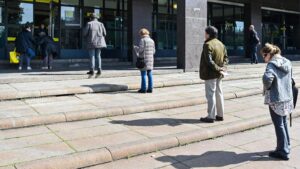
Respiratory hygiene is important because droplets spread the virus.
Make sure you and the people around you cover the mouth and nose when coughing and/or sneezing with:
By following good respiratory hygiene you are more likely to ‘catch’ any droplets that might be produced, and this further protects the people around you from viruses including COVID-19.
Remind those in your care to use good respiratory hygiene and to clean their hands after coughing or sneezing.
Make sure that when you are out and about you carry tissues for yourself and those in your care to use.
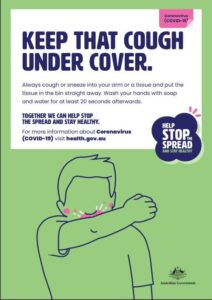
Wearing a mask helps to reduce community transmission.
One way COVID-19 is spread is when an infected person coughs, sneezes or speaks near another person.
The person infected with COVID-19 can be:
If a person is infected with COVID-19, a face mask helps to stop them spreading COVID-19 when they cough, sneeze or speak.


Enter your details below to receive the latest updates from IRT directly to your inbox
© 2024 IRT Group. All Rights Reserved • Terms and Conditions • Privacy Policy
© 2024 IRT Group. All Rights Reserved • Terms and Conditions • Privacy Policy
